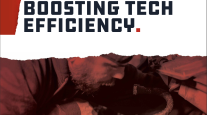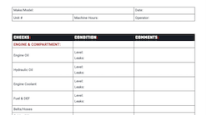Zero Emissions, Potential Savings of Electrics Appeal to Some Carriers

This story appears in the May 15 print edition of Equipment & Maintenance Update, a supplement to Transport Topics.
Nikola Motor Co. founder and CEO Trevor Milton said he has figured out electric power for longhaul trucks with his upcoming Nikola One, due in production in the 2020 timeframe. The truck will use electric storage and drive motors, with over-the-highway use enabled by a range-extending hydrogen fuel cell generating lithium-ion, or Li-ion, stored electricity.
But not everyone is convinced.
Steve Watts, an owner-operator who attended the December unveiling of the Nikola One in Salt Lake City, said the jury is out on this truck.
BEST OF MAY E&MU: More stories, columns
“The vehicle has no testing yet on the highway, which is kinda scary,” Watts said in an interview in March.
He said he likes the design of the new suspension and the hydrogen fuel cell concept. “But how are those batteries going to hold up with the beating and the cold weather and the corrosion?” he asked.
Yet Watts still ponied up his refundable deposit of $1,500.
Milton is not saying how much the Nikola One will cost, as he is not intending to sell the vehicle. But at the December launch, he said that lease payments would be $5,000 to $7,000 a month, which would include all maintenance and fuel for a million miles. And that would include tires. The only thing not covered would be customer damages, he said.
In a telephone interview with Equipment & Maintenance Update in late February, Milton said 8,000 orders have been placed. He also announced at the December launch that Nikola had amassed $4 billion in orders for the trucks when they go into production.
There’s no special profile for customers who have optioned early production slots, Milton said.
“There are hundreds of fleets with multiple orders,” he said, noting they are small, medium-size and large fleets. The average truck order is three to five trucks, and for larger fleets, it’s 100 and up, Milton said.
“We’ve got deposits on every one of our orders,” Milton said. “People don’t put money down for three years for no reason.”
As of early April, only a single prototype exists, with the U.S. Xpress Enterprises logo emblazoned on the side.
Max Fuller, founder and CEO of the truckload carrier, said he was surprised when the Nikola staff pulled the covers off the truck at the Salt Lake City launch.
“Trevor did call wanting a copy of our logo, and I thought he was going to put a small sign somewhere on the truck,” Fuller told EMU. “I didn’t realize it was going to be that big and dominate the side of the truck,” Fuller said, adding he believes Milton is looking for credibility in the industry.
“When I first went to visit with him, he was struggling with how a trucker would use his product and I offered a lot of free advice, and I’m still doing it,” Fuller said, adding he thinks that was Milton’s way of saying thanks for helping him along the way.
Fuller said he is expecting to help with refining prototypes and has optioned just one order. “At this point, it will depend on how well the initial truck runs,” Fuller said. “If it runs like he seems to think, then I’m probably going to switch the whole fleet over, but that’ll take many years to do,” he said, adding he wants his company to be “the cleanest fleet in America.”
Milton said the operating costs are 50% less with the Nikola One than operating a diesel truck. “And I say, heck, at 30%, it’s still a big deal,” Fuller said.
“The economics will drive the decision,” Fuller said. “That, and the quality of the product.”
U.S. Xpress, based in Chattanooga, Tenn., ranks No. 19 on the Transport Topics Top 100 list of the largest for-hire carriers in the United States and Canada.
Representing a smaller fleet, Paul Terry Trucking is a 30-truck operation that also has optioned an early Nikola One. Running 48 states, the all-refrigerated fleet will test the waters with a single truck, company President Paul Terry said. He added that he plans to operate the Nikola One in the same way that he runs his diesels, but it will be distinguished with a sign that proclaims it is a zero-emissions vehicle. Terry believes that should give him added visibility to shippers who ask about his company’s greening efforts when bidding freight.
In late February, U.S. Xpress’ Fuller said that he hadn’t thought about announcing the zero-emissions aspect of the truck. “But it may be a good idea.”
Terry is confident that the Nikola One will offer lower operating costs and certainly lower maintenance. But he thinks shippers are keen to ship their freight in zero-emissions trucks and will promote the fact in their market, even shifting a portion of their marketing budgets to transportation expenses if it turns out freight rates are higher. So Nikola could be a big win for his company, Terry said.
Meanwhile, there’s little doubt that electric vehicles are in nearly everyone’s future. While Nikola may be the first linehaul electric likely to hit the freeways, there are a couple of heavy-duty contenders running demonstrations on highways and city streets, hauling by electrics in drayage and refuse collection.
In urban environments, transit buses are increasingly going into service, either because the long-term payback favors electric traction due to the low maintenance and attractive fuel pricing or because diesels are being legislated out of city centers.
At the launch of the plug-in electric eCanter at the Indianapolis Work Truck Show this year, Fuso North America President Jecka Glasman said that, according to the United Nations’ Human Settlements Program, by 2030, 60% of the world’s population will be living in cities of between 1 million and 10 million people. It’s likely electric vehicles will dominate those city streets.
Last September, at the IAA commercial vehicle show in Hanover, Germany, Daimler Trucks rolled out its Mercedes-Benz Urban eTruck, available later this year in a limited run of 20 trucks for different customers.
“Following the world premiere in September 2016 at the International Commercial Vehicle Show, the customer reaction was outstanding,” Stefan Buchner, head of Mercedes-Benz Trucks worldwide, said in a statement after IAA. “We are currently talking to around 20 potential customers from the disposal, foodstuffs and logistics sector.”
The eTruck is available up to 55,000 pounds gross vehicle weight, giving it a heavy-truck payload of 28,000 pounds.
As a plug-in electric without any range extender, the Mercedes-Benz has a range of up to 125 miles, so will be targeted at distribution. Like Nikola, Buchner said that by 2020, Mercedes-Benz Trucks wants to be on the market with the series production of the Urban eTruck.
In shuttle operations in North America, electrics make enormous sense because of the low daily mileage and regenerative braking and new, fast-charging opportunities. Because of the sensitive environment, school buses increasingly will be battery electric. And in inner-city distribution, there’s an ever-growing number of manufacturers of pickup and delivery trucks that have sufficient range to complete a day’s deliveries on a single overnight charge.
BYD, China’s dominant electric bus manufacturer, said it is the world’s biggest electric vehicle builder and has a North American operation to sell transit buses as well as electric trucks, including the plug-in T9, a tandem drive cabover chassis with a 92-mile range. According to BYD, the truck is in production at its Lancaster, Calif., bus plant.
In Class 8, Southern California-based Transportation Power Inc., or TransPower, has been in a demonstration for more than a year with seven drayage tractors, based on repowered International ProStars that have a range of up to 100 miles as they are “pure” plug-in electrics.
TransPower also is demonstrating the benefits of electric traction in school bus, refuse truck and materials-handling applications.
“TransPower has been selected by Peterbilt to supply electric drive systems for an even more ambitious project that will result in deployment of 12 Class 8 electric drayage trucks, using Peterbilt’s Model 579 truck chassis over the next two years,” TransPower President and CEO Michael Simon said.
Currently sitting at the company’s Escondido headquarters are several Peterbilt gliders that include Model 520 refuse truck chassis and Model 579s for the next generation of port drayage demonstration vehicles, Simon said.
Electric transportation certainly is the future, especially for large vehicles that only have to travel short distance. Also, “a significant percentage” of Class 8 trucks in operation today are locally operated and candidates to use electric propulsion, Simon said. “Locally driven trucks, school buses, yard tractors, things like that — they’re logical candidates to use electric power,” he said.
California-based based Motiv Power Systems said it is proud to be “under the hood” of America’s first all-electric refuse truck, or ERV. The city of Chicago contracted with Motiv in 2012 to build up to 20 of these plug-in battery electric trash trucks. As of early April, a single prototype is in proof of concept.
At the time, the scalability and flexibility of the Motiv electric Powertrain Control System, or ePCS, made Motiv the most cost-effective choice for this revolutionary refuse truck, said David Lopina, general manager of the Illinois-based Cumberland Servicenter, the dealership providing the base chassis.
The truck uses a Loadmaster 20-cubic-yard Excel-S rear loader body and a Crane Carrier Co. chassis and cab supplied by Cumberland Servicenter, North America’s largest Crane Carrier dealer. In the spring of 2014, Cumberland Servicenter delivered the first truck to Chicago.
A refuse truck that has been shown, but yet to be put in service as of early April, is based on a Mack LR model with power by Alameda, Calif.-based Wrightspeed Inc. Wrightspeed’s Route power system uses a small, multifuel turbine as a range extender similar to Nikola’s fuel cell.
Company President Ian Wright, who was a co-founder of Tesla, said that the truck chassis is the ideal platform for electric drive simply because there’s more room and weight allowance to accommodate the batteries. Wrightspeed’s technology is capable of powering vehicles weighing up to 66,000 pounds up slopes as steep as 40%, according to Mack.
Late last year, Wrightspeed repowered a Freightliner Condor refuse truck for The Ratto Group, a refuse, yard waste and recycling collection and processing company operating in Sonoma County, Calif.
More than a dozen premium U.S. Environmental Protection Agency SmartWay shippers were contacted for this story, but most declined to comment.
However, Mary Anne Kotlarich, commercial public relations director for Michelin North America Inc., a SmartWay partner company, said in an e-mail that Michelin North America “is not currently shipping with any zero-emissions carriers.”
“We do consider environmental issues when we consider carrier bids for nonfinished goods between our plants or for long distance with intermodal solutions,” Kotlarich said. “The Michelin Group objective is to reduce CO2 emissions linked to transportation by 10% between 2010 and 2020.”
Most major corporations’ websites include policy statements, such as this, from Alex Gorsky, chairman and CEO of Johnson & Johnson: “We are committed to operating responsibly and we seek to reduce adverse environmental impacts from our operations, products and services. To manage our environmental risks, we pursue a path of continual improvement — investigating, assessing, understanding and improving environmental aspects and impacts using robust management systems.” ³




